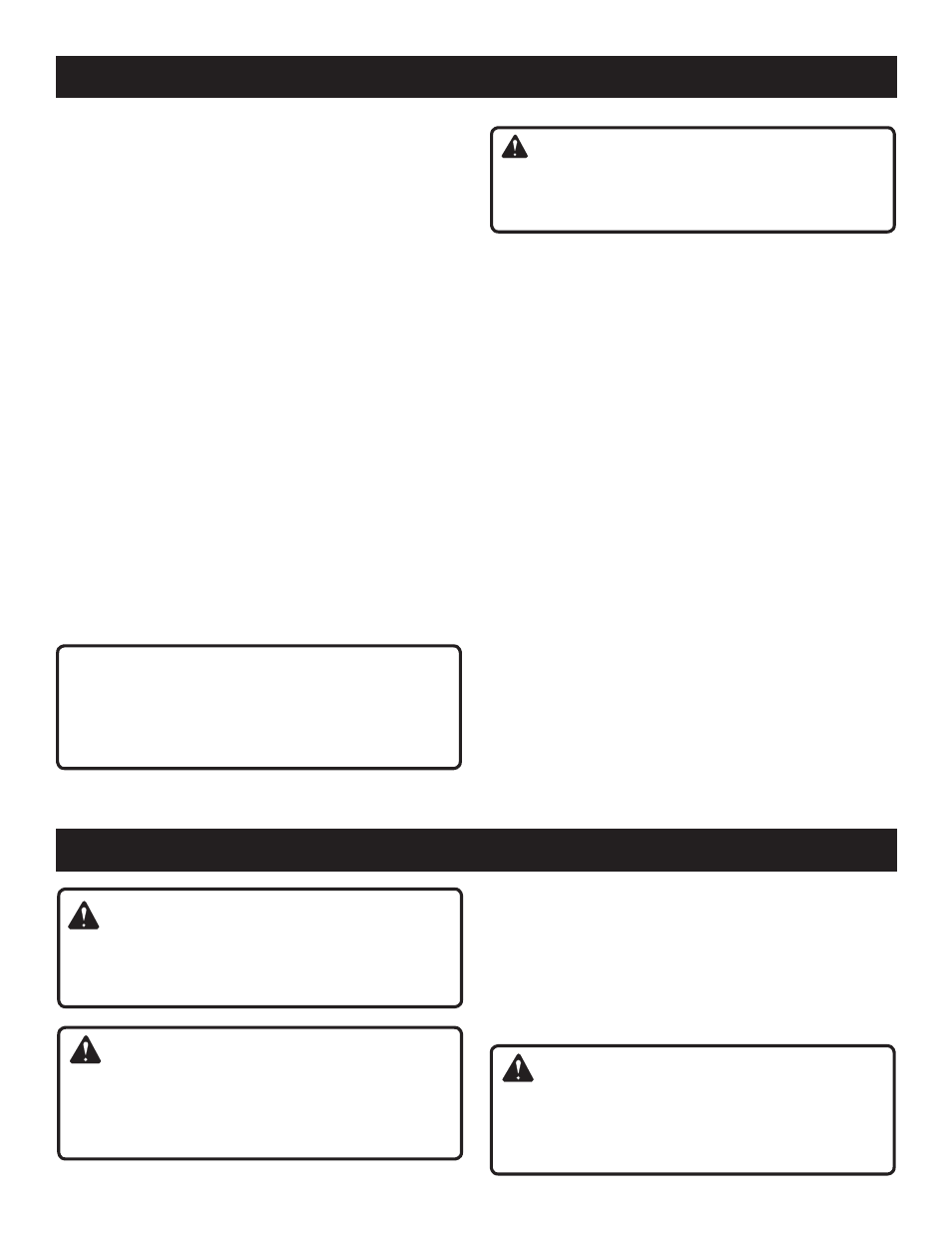Operation, Maintenance – Ryobi SSP300 User Manual
Page 9

9 — English
OPERATION
• Depress the trigger to begin the spray off the
material you want to paint. Operate the sprayer in
straight horizontal or vertical strokes across the
surface being painted, then release the trigger off
the material to end the stroke.
NOTE: For spray quality consistency when using thinner
paints, it may be necessary to keep the trigger depressed
between strokes.
When finished, unplug the sprayer, return any unused
paint or stain to its original container, and thoroughly
clean the sprayer.
CLEARING A PAINT CLOG
See Figure 8, page 13.
If paint is not flowing freely through the spray tip or the surface
does not show an even coat of paint, the spray tip may be
clogged. Reversing the spray tip can help to free the clog.
Twist the spray tip so that the pointed end is turned
toward you.
Point the paint sprayer toward a piece of scrap material.
Press the trigger until paint flows through the spray tip.
This should clear the clog.
Turn the spray tip so that the pointed end is facing away
from you.
Test the sprayer on a piece of scrap material before you
resume painting.
CAUTION:
It is important to thoroughly clean the sprayer after each
use or when changing colors. Allowing paint or stain to
remain in an idle tool for an extended period can cause
its moving pieces to seize up.
WARNING:
Do not clean with any flammable liquids such as paint
stripper, paint remover, brush cleaner, mineral spirits, lac-
quer thinner, turpentine, acetone, gasoline, kerosene, etc.
CLEANING THE SPRAYER AFTER USE
The solution used to clean the sprayer is determined by
the type of material that has been sprayed. For anything
other than latex material, follow the material manufacturer’s
directions for appropriate clean-up.
To clean the sprayer for short term storage:
Unplug the sprayer.
If you haven’t already done so, remove the paint container
and return any unused paint or stain to its original
container.
Fill the paint container with lukewarm water (for water
based paints) or non-flammable solvent (for oil-based
paints or varnish, or any other non-flammable paint
thinner (following the use of oil-based products).
NOTE: For best results, clean the container first.
Reinstall the paint container.
Plug in the sprayer.
Spray the solution onto a piece of cardboard or other
scrap material. Continue spraying until all the solution is
used.
Unplug the sprayer.
Place a line of lubricant on the piston. To gain access to
the piston, follow the instructions in
Cleaning the Sprayer
for Storage in the Maintenance section of this manual.
Use a damp cloth to wipe the exterior of the sprayer. The
unit is now ready to put away.
MAINTENANCE
WARNING:
When servicing, use only identical replacement parts.
Use of any other parts could create a hazard or cause
product damage.
WARNING:
Always wear eye protection with side shields marked to
comply with ANSI Z87.1. Failure to do so could result
in fluids entering your eyes resulting in possible serious
injury.
GENERAL MAINTENANCE
NOTE: Always unplug the unit before attempting a service
operation.
Avoid using solvents when cleaning plastic parts. Most
plastics are susceptible to damage from various types of
commercial solvents and may be damaged by their use. Use
clean cloths to remove dirt, dust, oil, grease, etc.
WARNING:
Do not at any time let brake fluids, gasoline, penetrating
oils, etc., come in contact with plastic parts. Chemicals
can damage, weaken, or destroy plastic which could
result in serious personal injury.
